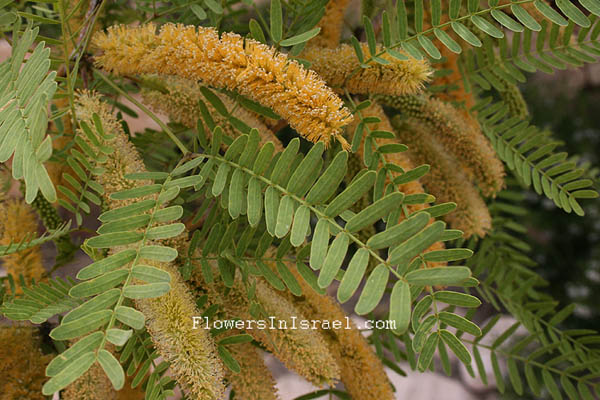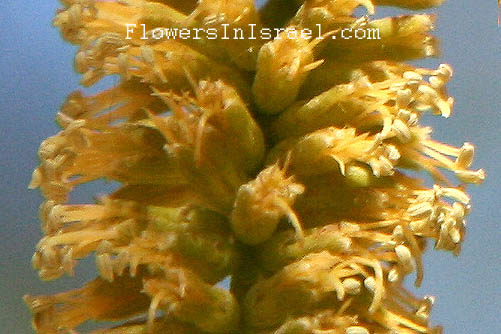Hebrew: שיטה רעננה, Arabic: السنط السعيد
| Scientific name: | Acacia laeta R. Br. ex Benth | |
| Synonym name: | Senegalia laeta (R. Br. ex Benth.) Seigler & Ebinger | |
| English name: | Gay Acacia | |
| Hebrew/שם עברי: | שיטה רעננה | |
| Arabic/الاسم العربي: | السنط السعيد | |
| Español: | Acacia laeta | Family, משפחה: | Mimosaceae, Mimosa Family, שיטיים |

|
| Life form: | Tree | |
| Spinescence: | Stipules | |
| Leaves: | Bipinnate with 3-5 pairs of fairly large pinnate leaflets and 2-5 pairs of pinnae, the leaflets being clearly separate from each other and asymetric. Thorns in pairs of recurved axillary prickles, with sometimes a third prickle recurved forward, when the latter is missing it is replaced by a leaf. | |
| Flowers: | Flowers are very fragrant and white-cream in colour, set out in 3-8 cm long spikes, pedunculate and disposed in triplets | |
| Fruits: | Fruit a pale brown leathery pod | |
| Flowering Period: | March, April | |
| Habitat: | Desert, thermophilous (heat-loving) | |
| Distribution: | Deserts and extreme deserts, Dead Sea Valley | |
| Chorotype: | Sudani | |
| Summer shedding: | Perennating |


flower details Derivation of the botanical name: Acacia, from the Greek word akis, meaning a point or a barb. laeta, laetus, "joyful, cheerful, happy." The hebrew word: שיטה, shittah (Acacia, tree and a wood), borrowed from Arabic sant, سنط, in ancient Egyptian: Sndt, Sntt.

|